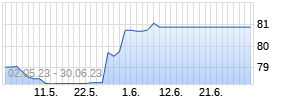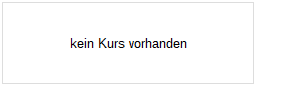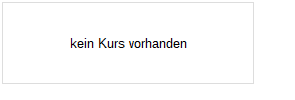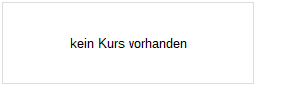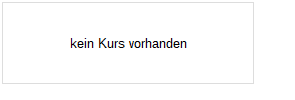
Die Zentralbanken haben ihre Straffungskampagne fortgesetzt. Werden sie so lange weitermachen, bis etwas zerbricht?
09.06.2023 - Recent surveys have hinted at a slowdown in economic growth, but underlying inflation is proving more persistent, pressuring central banks to hike rates further. Yet, how tightening credit conditions interact with already restrictive monetary policy stances is a key uncertainty.
Mixed economic data
In early 2023, economic growth has been more resilient than feared due to the boosting impact of the Chinese reopening, combined with a warmer winter that supported the construction sector and prevented an energy crisis in Europe. What’s more, several governments – especially in Europe – acted swiftly to extend support to households, which helped cushion the effects on high inflation on their income. However, these factors are temporary in nature and recent soft data seem to indicate a possible turnaround.
In China, April’s industrial production and retail sales missed expectations, and May’s business confidence surveys have also disappointed, suggesting the reopening bounce is indeed fading. The manufacturing PMI unexpectedly fell to 48.8(1), the lowest reading since December 2022, and the non-manufacturing index (services and construction sectors) slid to 54.5 from 56.4, also below expectations. Investors have trimmed their 2023 growth forecasts to 5.5 per cent from almost 6 per cent earlier this year, but more downgrades might be needed as it remains higher than the government’s target of around 5 per cent, while officials seem reluctant to take aggressive measures to support the economy. Ironically, although China’s GDP and profits could disappoint investors, a more moderate growth profile is likely good news for the global economy as the fight against inflation is far from over.
In the US, the outlook is murky. On the one hand, surveys have deteriorated. The ISM manufacturing index fell to 46.9 in May, thus remaining in contraction territory for the ninth month in a row, with the new orders sub-index falling to a depressed (42.6) level. In the services sector, business confidence fell to 50.3(2), a level seen lower only once since early 2010, barring the fall in 2020 in the midst of the pandemic, pointing to a clear economic slowdown. On the other hand, the labour market remains very tight. Vacancies unexpectedly surged in April to 10.1 million, and the ratio of openings to unemployed people rose to 1.8, the highest in three months and near an all-time high. Furthermore, 339,000 jobs were created in May and the three-month average moved up to more than 280,000, suggesting labour demand remains robust, whereas wage growth is still incompatible with a swift return of inflation to the Fed’s target.
Business confidence has also weakened in the Eurozone, especially in the industrial sector, and recent revisions showed that Germany fell into a technical recession earlier this year. On the bright side, inflation eased more than anticipated in May according to flash estimates, falling from 7.0 per cent to 6.1 per cent on the back of lower oil and gas prices. Core inflation fell from 5.6 per cent in April to 5.3 per cent as service inflation eased 0.2ppt to 5.0 per cent, the first deceleration since last November as the €49 regional public transport ticket in Germany played an important role. Yet, while the momentum on core inflation is easing, service inflation should remain elevated over the course of the summer, and possibly even go back on the rise.
Tighter credit condition, falling demand
The ECB’s Bank Lending Survey (BLS) and the Fed’s Senior Loan Officer Survey (SLOS), published in early May, both showed financial institutions further tightened credit conditions, especially for businesses(3). The uncertain economic outlook, a reduced tolerance for risk, a deterioration in collateral value, and concerns about banks’ funding costs and liquidity positions were among the banks’ most cited reasons for tightening lending standards. What’s more, higher interest rates were leading to an intensifying fall in demand, especially for commercial real estate loans as a record share of US banks indicating less demand.
The link between economic activity and credit is particularly scrutinised by central banks. Indeed, when credit grows, consumers can borrow and spend, and firms can borrow and invest. A rise of consumption and investments also creates jobs, which further spurs the economy. Conversely, higher costs and lower access to credit weigh on economic activity through negative effects on consumption and investment decisions.
That said, there is great uncertainty about the speed and intensity of these effects, especially since the share of fixed-rate loans in the economy is much higher than in the past monetary policy tightening cycles. In that regard, lags of monetary policy might be longer than usual.
The Fed’s Chair, Jerome Powell, has recently stressed that the credit crunch expected in the aftermath of recent bank failures, combined with the SLOS results, will likely weigh on economic growth and hiring. As a result, the policy rate may not need to rise as much as it would have otherwise to tackle inflation. Although the Fed is likely to pause in June, taking the time to assess monetary policy’s long and variable lags and banking sector stress, it will nonetheless likely signal that the task is not done as the labour market tightness remains a major source of price pressures amid sticky core inflation rate. What’s more one concern of policymakers is the potential for positive feedback from a pause to financial markets, as sanguine investors’ positioning would loosen financial conditions, thus undermining the Fed’s intentions to slow activity.
Meanwhile, ECB’s President, Christine Lagarde, acknowledged that the results of the latest BLS showed the impact of the tightening cycle, which convinced the Governing Council to downshift the pace of rate hikes, delivering a 25bps increase in interest rates instead of 75 or 50bps in prior meetings. That said, the ECB is likely to pursue its tightening campaign until it is sufficiently confident that inflation is on track to return to the 2 per cent target in a timely manner.
Finden Sie hier den vollständigen Artikel "Monthly Macro Insights | June 2023" (in englischer Sprache) mit Grafiken.
Completed writing on 7 June 2023




